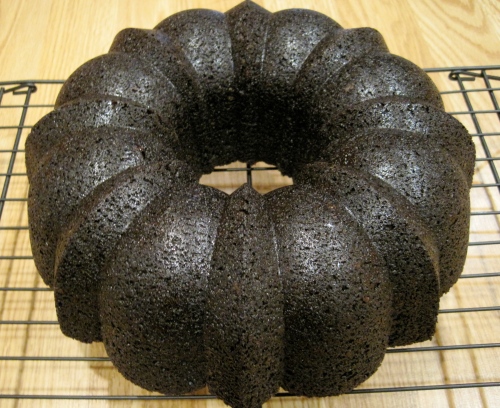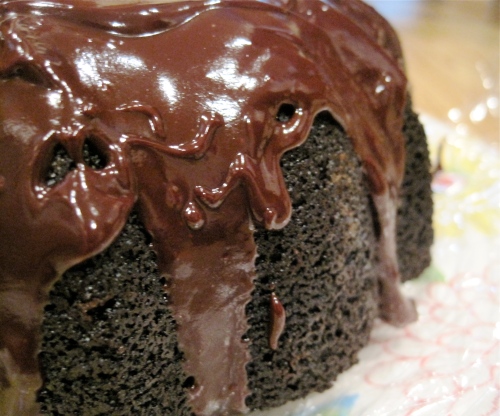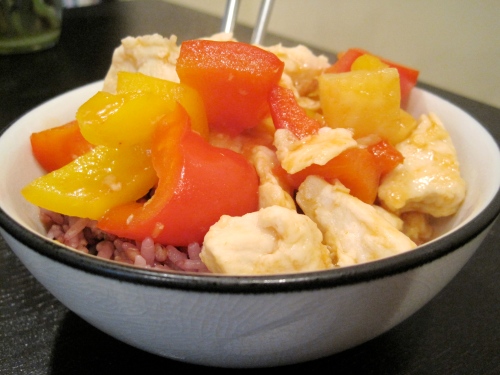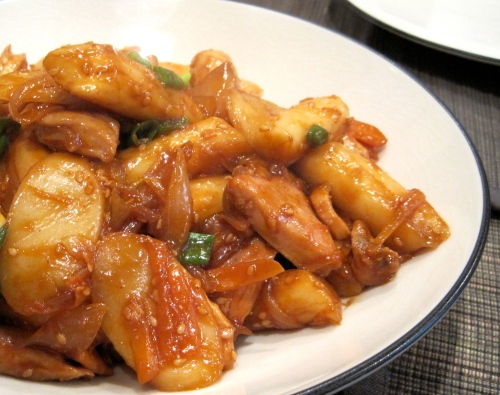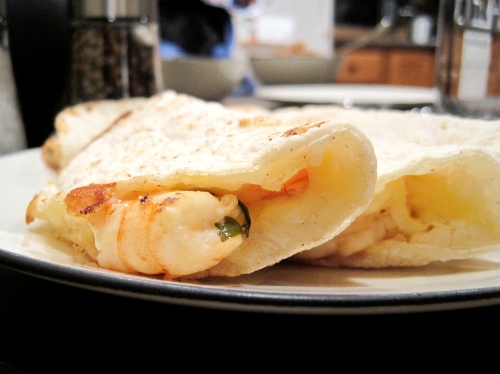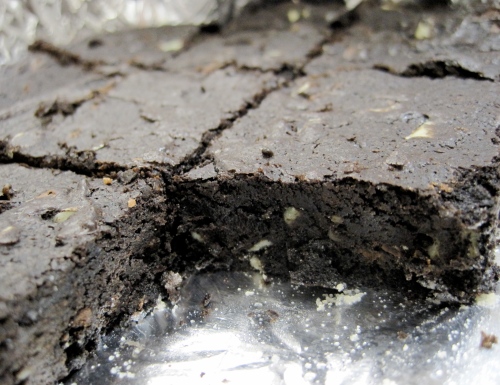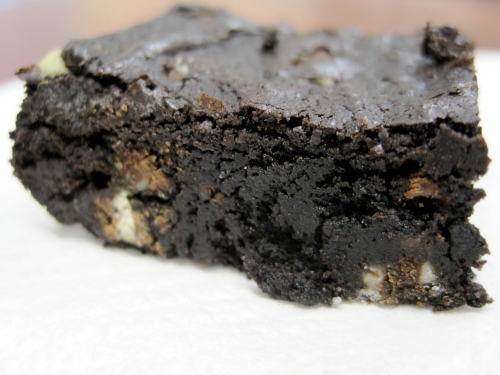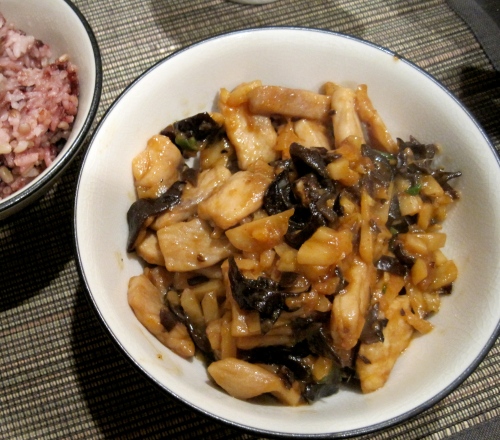I think the best recommendation I can give this Basil-Lemon Shrimp Linguine is that I liked it so much, I made it for my mother-in-law when she came to visit our house for the first time. It’s easy, delicious, and rather elegant, if I do say so myself. It’s also the kind of dish that allows you to gather all the ingredients and be totally ready for a 5-minute meal assembly when guests — as in, in-laws — arrive, or when everyone is finally ready to eat. Basil Lemon Shrimp Linguine is no-stress, delicious… and at least looks sophisticated.
This would be a perfect summer meal, since the basil and the fresh lemon are flavors we usually associate with summer. Nevertheless, we found some basil at Trader Joe’s that was cheap enough to get without shorting our landlord on the rent (herbs are just so expensive in Chicago in February… this IS the summer I am going to start an indoor herb garden…).
I found the recipe at Dine & Dish, a really lovely food blog, but I have gotten in the habit of taking many liberties with the proportions, since we found the original ratio to be really butter-heavy — and you know that if I find a sauce butter-heavy, it probably is, because I can usually never get enough butter 🙂 . The results of our experimenting are reflected in the recipe below — try it our way, and then tinker with it yourself to find your favorite flavor!

Basil Lemon Shrimp Linguine
Adapted from Dine & Dish
Serves 4.
- 2/3 lb. (12 oz.) whole wheat linguine or other long pasta
- 1 lb. cooked shrimp, thawed and drained (I took some raw shrimp, dunked them in a pot of cold water, turned up the burner to high, and around the time the water boiled, the shrimp were done. Rinse them in a colander with cold water to stop the cooking, and you’re ready to go.)
- 3 ½ tablespoons unsalted butter, melted
- ¼ cup fresh lemon juice (from about 1.5 or 2 lemons)
- 2 tablespoons fresh basil leaves, julienned
- 3 garlic cloves, minced
- ½ teaspoon salt
- ½ teaspoon fresh ground black pepper
- 1/3 cup parmesan cheese, grated
Cook pasta in a large pan of salted, boiling water until al dente. Add shrimp and drain immediately, then return pasta mixture to the pan.
While the pasta cooks, combine melted butter, lemon juice, basil leaves, garlic, salt, and pepper to make the sauce.
When the pasta and shrimp are done, toss with the sauce in the pan, or even right in your serving dish. Sprinkle the parmesan cheese over pasta and serve immediately.


